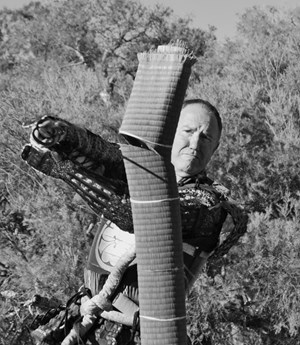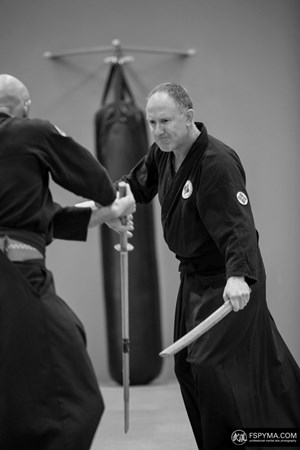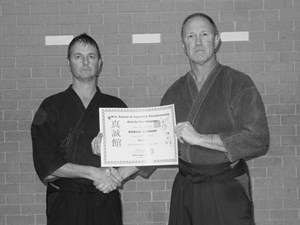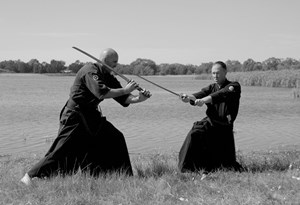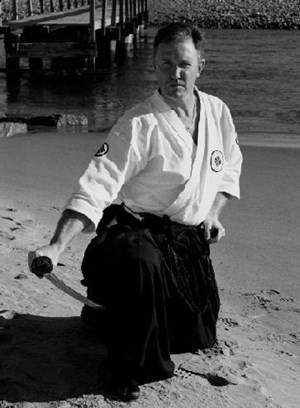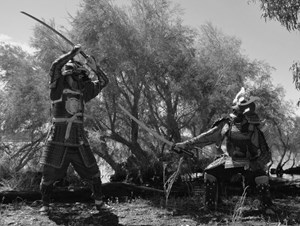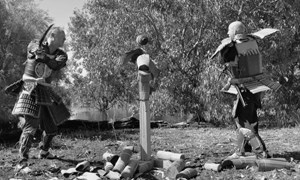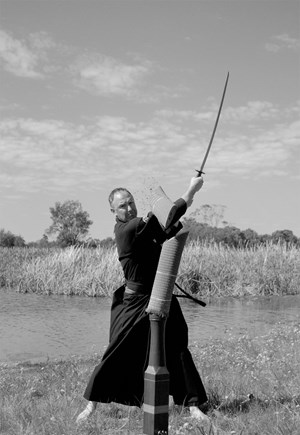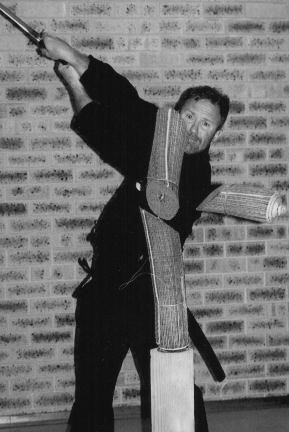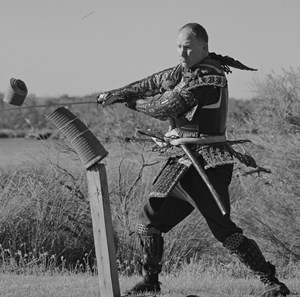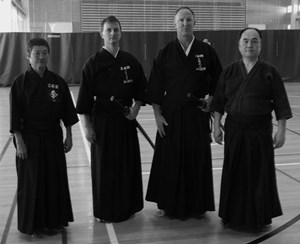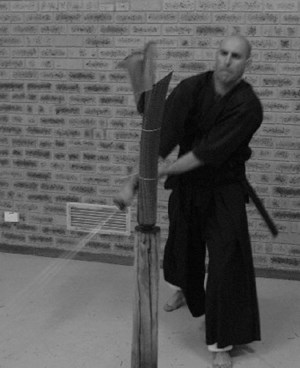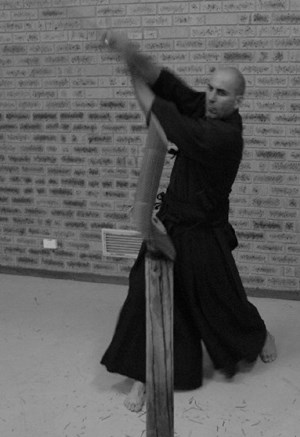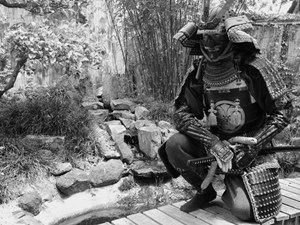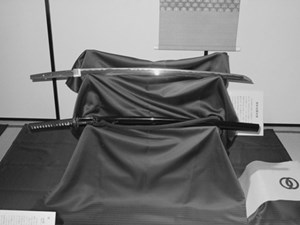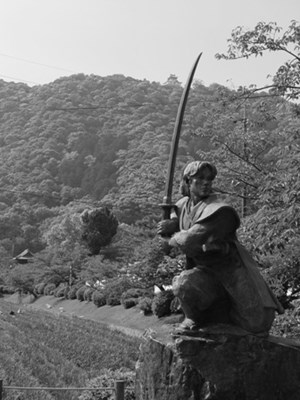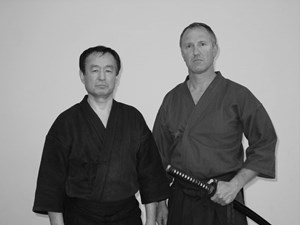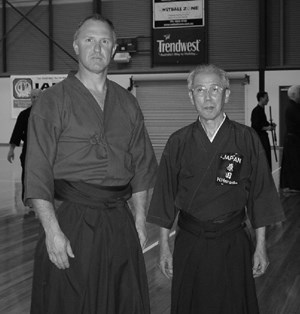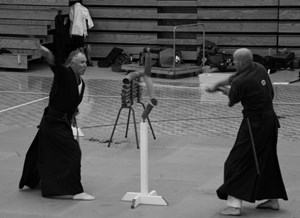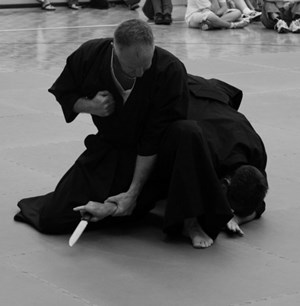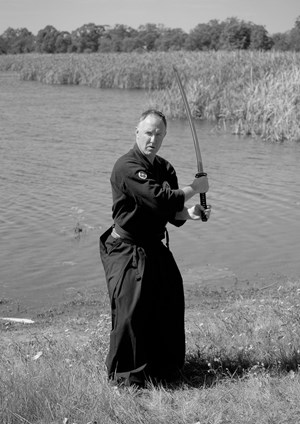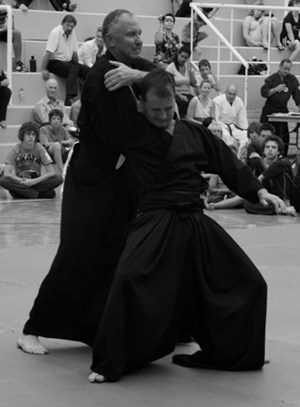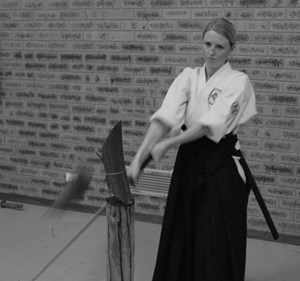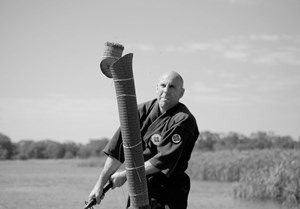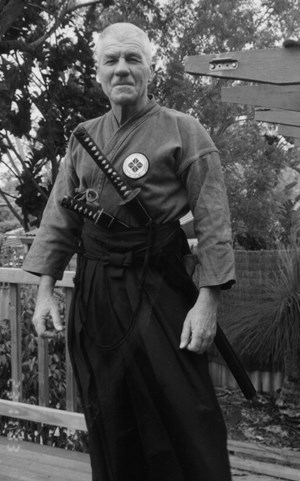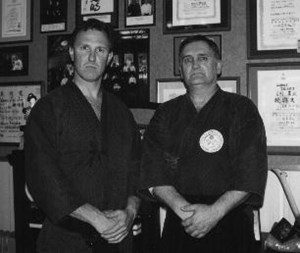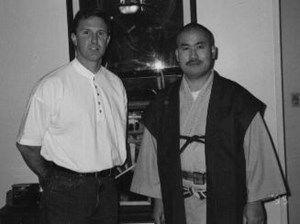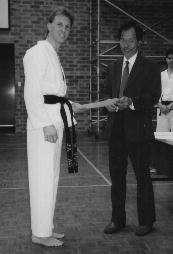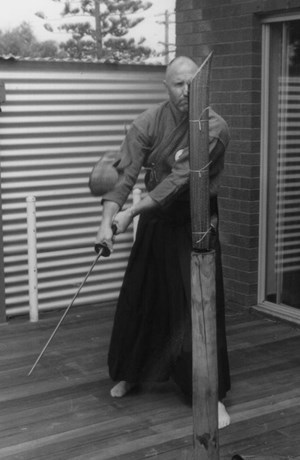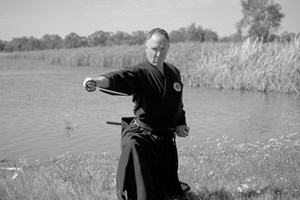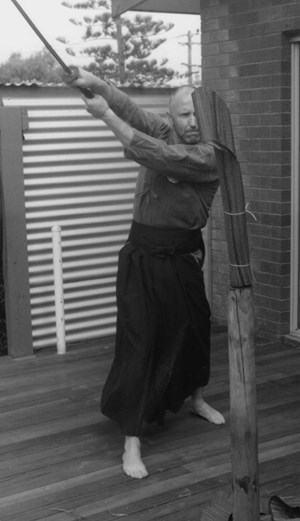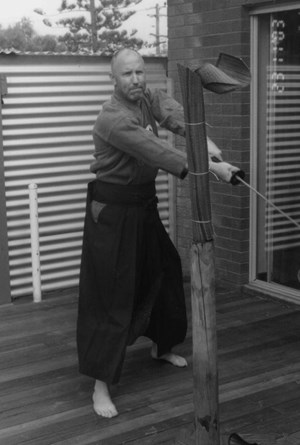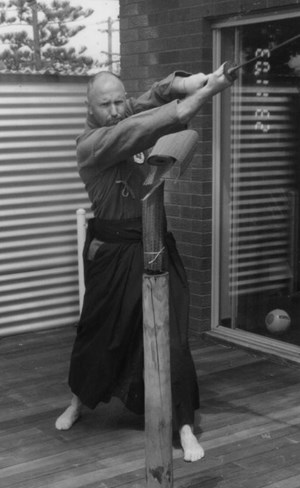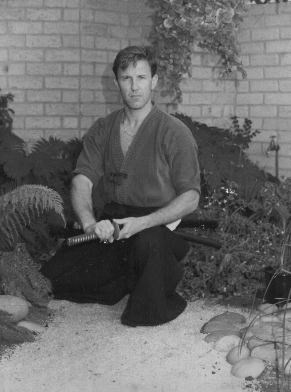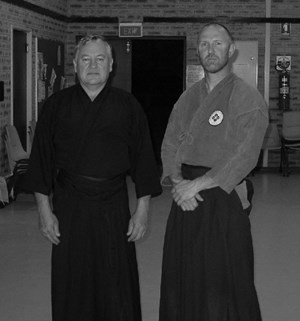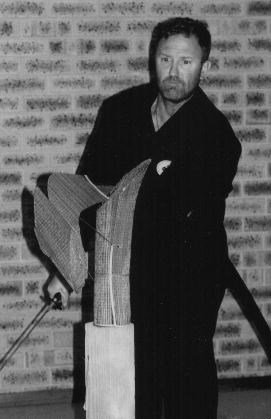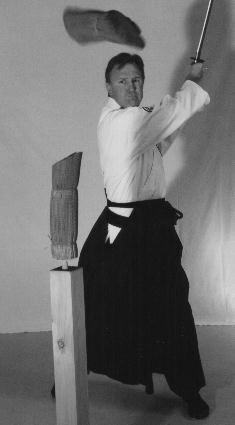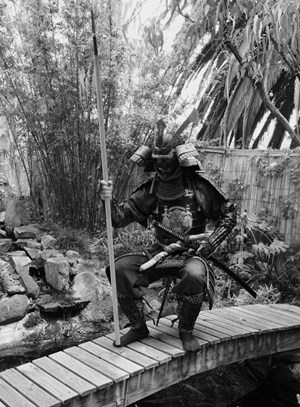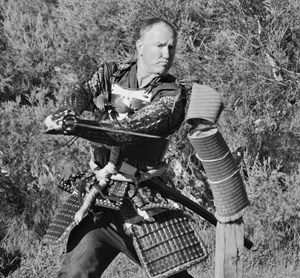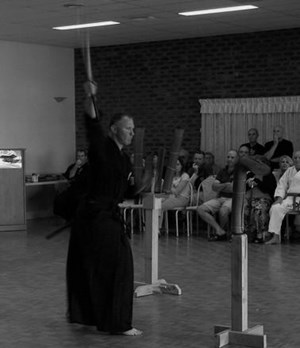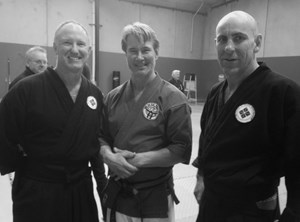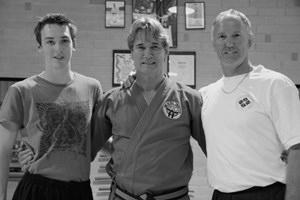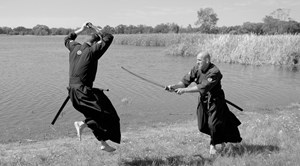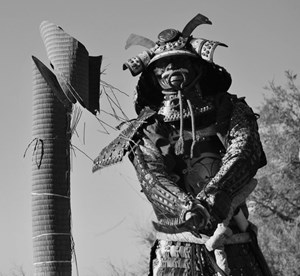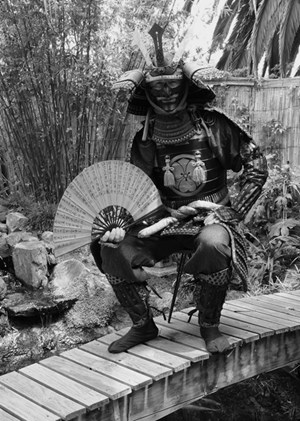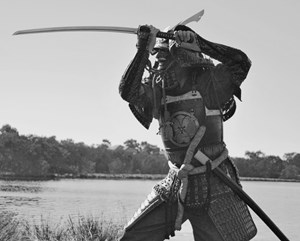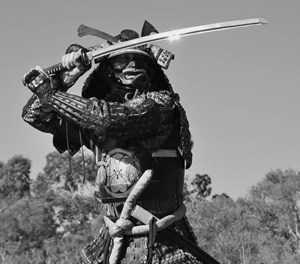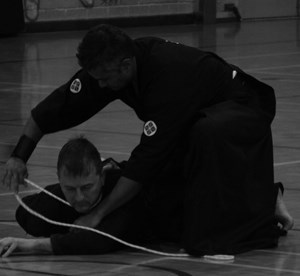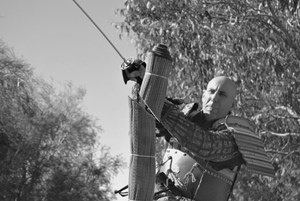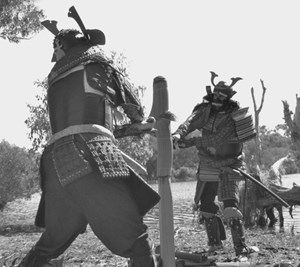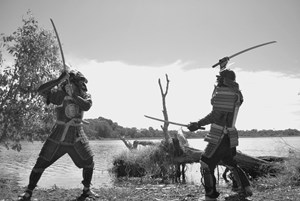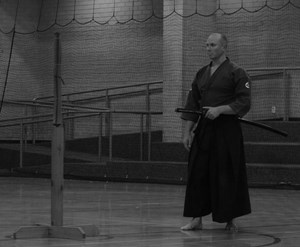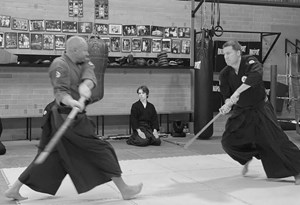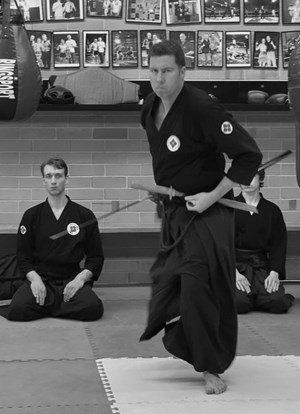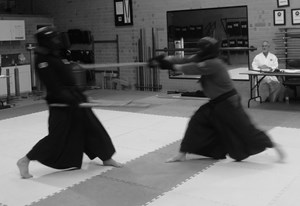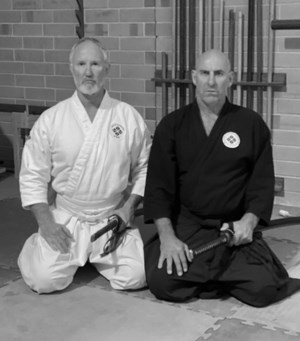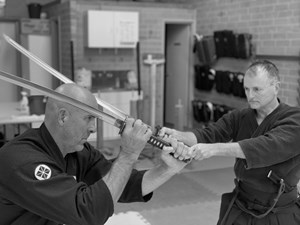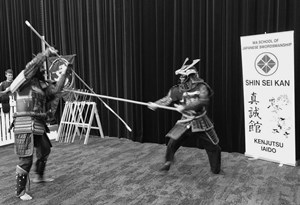Selecting a Cutting Blade
The ability of students to cut successfully obviously hinges on the technique they use. Technique includes blade alignment, body movement, grip and cutting action. However, it is essential we don't forget about the actual blade being used. The blade used for test cutting has an enormous impact on the ability of a student to cut. If a poor cutting blade is not picked up early enough, it has the potential to seriously dent a students confidence and cause them to modify their technique in a negative way.A wide range of blades are and have been used at the WA School of Japanese Swordsmanship. Some of the blades are Japanese blades from the World War 2 period, some are Gendai blades, others are mass produced blades, some are modern hand made blades. The point is that they all cut differently and some blades are proving very difficult to cut with at all. This creates a dilemma for students because none of these blades are 'cheap', especially if they don't cut. Even a $250 blade is expensive if it doesn't do the job you bought it for.
So why do some blades cut and others don't?
I believe cutting ability is in the curvature of the blade and how the handle is mounted. My senior student has a Japanese WW2 blade, it is not particularly sharp or heavy, but I have never seen the weapon fail to cut. Sempai has a very casual style of cutting, his technique is good, but also it would appear the blade curvature is good and it suits his technique: he was very lucky because the blade was not cheap. One of the school blades is from Michael Fechner, and it has never failed to cut. It is a sharp and relatively heavy blade (compared to most Japanese blades) but I believe the curvature of the blade has a lot to do with its cutting ability.
On the other side of the fence, one of my students was given a blade made in the USA. It was relatively inexpensive in terms of live blades, but not only did the edge chip quite badly from poor cutting technique, but it also demonstrated a reluctance to cut at times. On viewing this blade and possibly attracted by the price, another students bought the same blade (without my consultation). This new blade has never cut cleanly and mostly will not cut at all. This student was previously having trouble cutting with other blades (blades that had already demonstrated their cutting ability). After asking these students to demonstrate their cutting with their USA blades and then asking them to cut with another blade, both were able to cut cleanly and one even remarked on the difference: technique was not the major issue. I was able to cut with the blade, however, I could not say the cut was clean or effortless to perform. For these students, purchasing a blade that would not cut has dented their ego somewhat, dented their pockets and caused some serious negative self modifications in their cutting technique. These problems need to be ironed out.
I have had mass produced blades and found they would not cut cleanly, no matter how basic a cut was performed or how clean the technique was. On inspecting the blade some flat spots were apparent, and these were also apparent on the USA blade mentioned in the previous paragraph. Another style of mass produced blade has proven to have excellent cutting ability. One of the schools students is a very light young lady and she has no trouble at all cutting with this mass produced weapon, it is a sharp but light weapon. The curvature and handle alignment have a lot to do with a swords ability to cut.
Given that some cheaper blades have flat spots, these should be avoided, however, there is the question of blades where the curvature and alignment either do not match your cutting style or are plainly not quite right. How can you tell if a blade fits into this later category? Try cutting with it. If test cutting a blade, as has been done by Samurai for hundreds of years, is not possible, then you may need to take the chance (as would be the case with old blades). You may have to be prepared to move it on and buy something else. Alternatively, cut with as many blades as possible and closely view each blade. This may give you a deeper understanding of what you should be looking for in a cutting blade.
Beware, not all blades cut. If a student is having trouble cutting, technique is some of it, but as an instructor, I try the blade myself and I do this early so that the student does not build up bad habits whilst practising. Cheaper does not always mean poor cutting ability, but check for flat spots and make sure the handle follows the curvature of the blade. Gendai and WW2 blades are not always a guarantee of cutting ability, buying these is potluck unless you are familiar with the maker. Generally speaking new students should start with a school blade or initially purchase a blade that will actually cut. Allow students to build up their technique and then let them explore with other blades confident that their technique is not in question.
